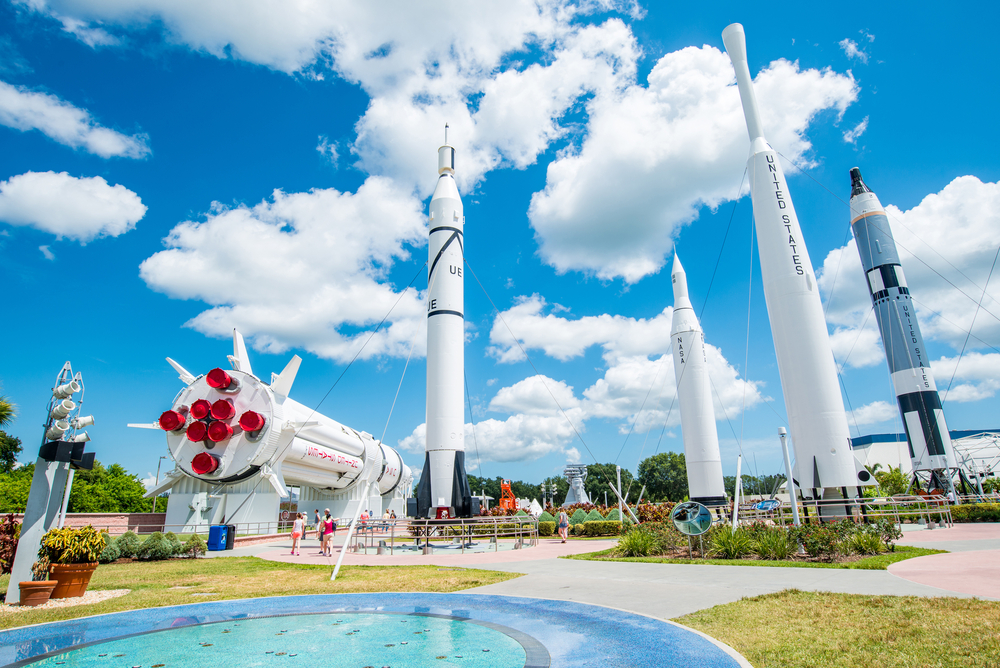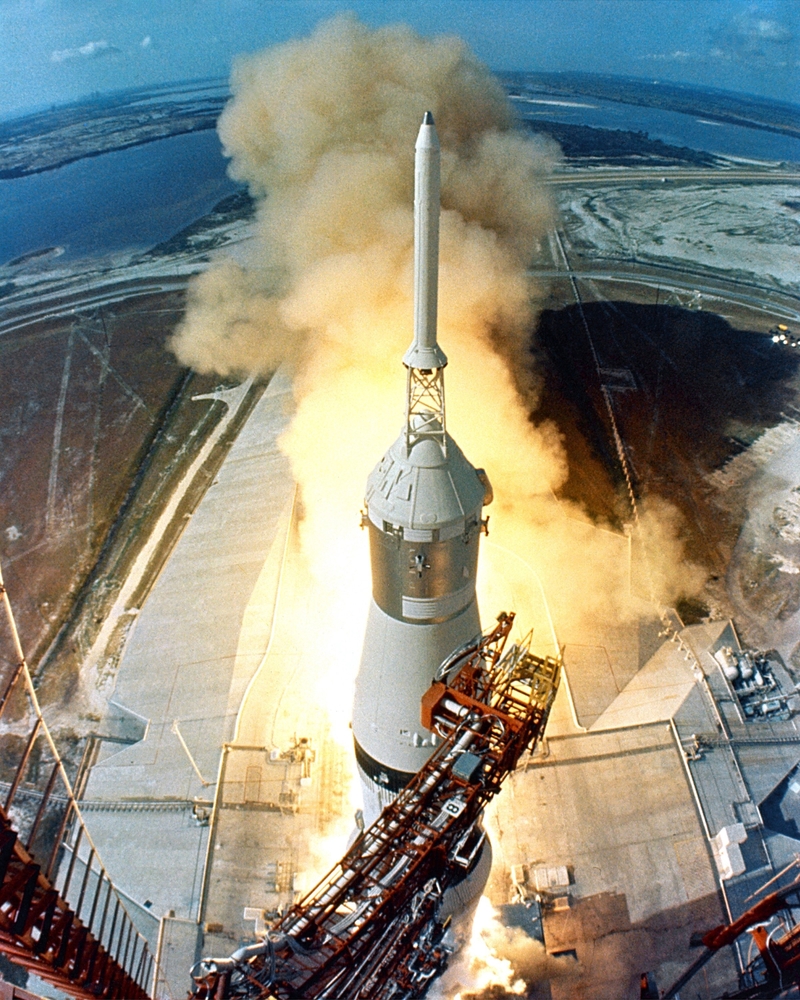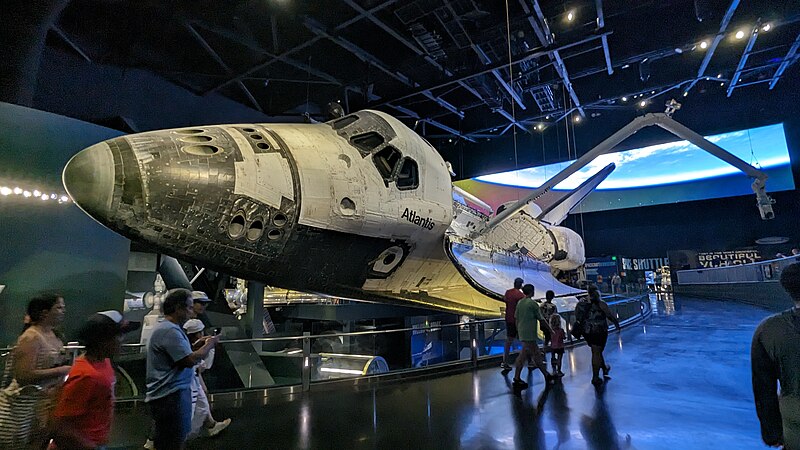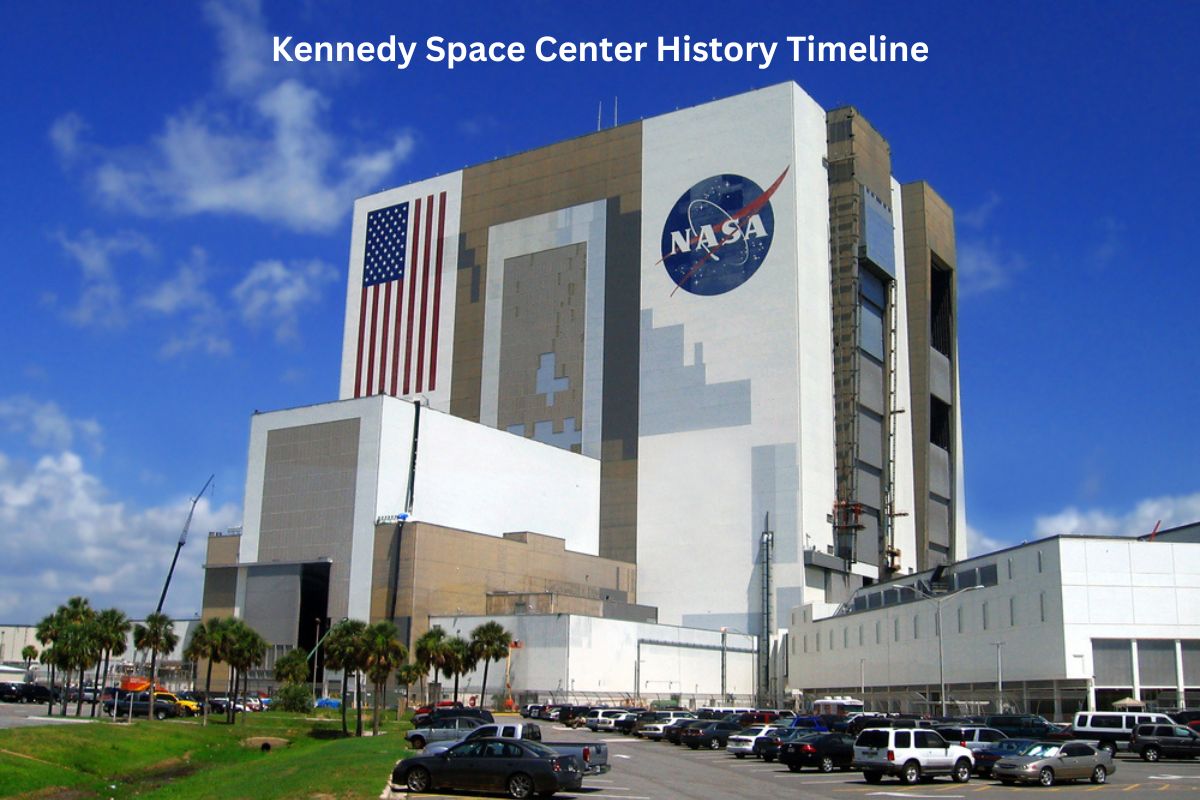The Kennedy Space Center (KSC), located on Merritt Island, Florida, is a renowned space launch facility that has played a pivotal role in the history of space exploration.
Established in the early days of NASA, KSC has been the site of numerous historic launches, including the first Space Shuttle mission and the Apollo missions that landed astronauts on the Moon.
Over the years, it has adapted to support a wide range of space endeavors, from crewed missions to satellite deployments and commercial spaceflight. This introduction provides a glimpse into the rich and diverse history of the Kennedy Space Center.
| Year | Event |
|---|---|
| 1958 | Establishment of NASA |
| 1962 | Selection of Merritt Island as launch site |
| 1963 | Renamed John F. Kennedy Space Center (KSC) |
| 1965 | First crewed launch – Gemini IV |
| 1967 | KSC becomes primary launch site for Apollo program |
| 1970s | Support for Skylab missions and Space Shuttle program |
| 1981 | First Space Shuttle launch (Columbia) |
| 1986 | Challenger disaster |
| 1990s | Launch of Hubble Space Telescope |
| 2000s | Support for Mars rover missions and ISS assembly |
| 2010s | Launch site for commercial space companies (SpaceX, Boeing) |
| 2020s | Key role in Artemis program for Moon and Mars missions |
Timeline of the Kennedy Space Center
1958: Establishment of NASA
In response to the growing interest in space exploration and competition with the Soviet Union during the Cold War’s space race, the United States established the National Aeronautics and Space Administration (NASA) on July 29, 1958.
The agency’s mission was to coordinate and manage all of the nation’s civilian space activities.

1962: Selection of Merritt Island as launch site
After NASA’s establishment, it became evident that the existing launch facilities, primarily located on the West Coast, were insufficient for the growing space program’s needs. A decision was made to establish a new space launch facility on the East Coast of the United States.
Also Read: Most Famous Spacecraft
Merritt Island, located on Florida’s east coast, was chosen as the site for the new facility due to its favorable geographic location, proximity to the Atlantic Ocean, and accessibility for rocket launches.
1963: Renamed John F. Kennedy Space Center (KSC)
In honor of the late President John F. Kennedy, who had been a strong advocate for space exploration and had set the goal of landing a man on the Moon before the end of the decade, the Launch Operations Center was renamed the John F. Kennedy Space Center (KSC) on November 29, 1963.
This renaming reflected the nation’s commitment to achieving Kennedy’s vision for space exploration and marked a significant moment in the center’s history.
1965: First crewed launch – Gemini IV
On June 3, 1965, the Kennedy Space Center (KSC) hosted its first crewed space launch, which was part of NASA’s Gemini program.
The mission, known as Gemini IV, carried astronauts James McDivitt and Edward White into space. During this mission, Edward White became the first American astronaut to perform a spacewalk (extravehicular activity or EVA).
Also Read: Space Shuttle Facts
The successful launch of Gemini IV marked an important milestone in KSC’s history as it demonstrated the center’s capability to support crewed space missions.

1967: KSC becomes primary launch site for Apollo program
In the mid-1960s, the Kennedy Space Center (KSC) played a pivotal role in NASA’s Apollo program, which aimed to land astronauts on the Moon.
KSC became the primary launch site for Apollo missions, including the iconic Apollo 11 mission, which successfully landed astronauts Neil Armstrong and Buzz Aldrin on the lunar surface in July 1969.
KSC’s launch facilities, such as Launch Complex 39A and Launch Complex 39B, were instrumental in launching the massive Saturn V rockets that carried astronauts to the Moon.
1970s: Support for Skylab missions and Space Shuttle program
During the 1970s, KSC continued to support significant space missions. It played a crucial role in launching and supporting Skylab missions, America’s first space station, which operated in Earth’s orbit from 1973 to 1974.
Additionally, KSC became involved in the early preparations for the Space Shuttle program, which aimed to develop a reusable spacecraft for Earth orbit missions. The first Space Shuttle, Columbia, was launched from KSC’s Launch Complex 39A on April 12, 1981, marking the beginning of a new era in space exploration.
The Space Shuttle program would go on to conduct numerous missions, including deploying satellites, conducting scientific research, and assembling and servicing the Hubble Space Telescope.

1981: First Space Shuttle launch (Columbia)
On April 12, 1981, a historic event took place at the Kennedy Space Center (KSC) with the launch of the Space Shuttle Columbia (STS-1).
This launch marked the beginning of the Space Shuttle program, a groundbreaking initiative by NASA to develop a reusable spacecraft capable of carrying astronauts into Earth orbit and back. The Columbia was commanded by veteran astronaut John W. Young, with Robert L. Crippen as the pilot.
The Space Shuttle represented a significant departure from previous space launch vehicles, as it was designed to be reusable. After completing its mission, the Space Shuttle could return to Earth, land like an airplane, and be prepared for subsequent flights.
This reusability promised to reduce the cost of space access and increase the frequency of human spaceflight missions.
The STS-1 mission was primarily an orbital test flight to evaluate the shuttle’s systems, including its launch, orbit, and landing capabilities. Columbia spent 54.5 hours in space during this mission, completing 36 orbits of Earth before landing safely at Edwards Air Force Base in California on April 14, 1981.
1986: Challenger disaster
On January 28, 1986, one of the most tragic events in the history of the Kennedy Space Center occurred when the Space Shuttle Challenger (STS-51-L) disintegrated just 73 seconds after liftoff, resulting in the loss of all seven crew members, including schoolteacher Christa McAuliffe.
The disaster was caused by the failure of an O-ring seal in one of the solid rocket boosters, leading to a catastrophic explosion. The Challenger tragedy led to a suspension of the Space Shuttle program and a reevaluation of safety protocols and procedures.
1990s: Launch of Hubble Space Telescope
In April 1990, the Kennedy Space Center played a critical role in launching the Hubble Space Telescope (HST) aboard the Space Shuttle Discovery (STS-31). The Hubble Space Telescope has since become one of the most important astronomical observatories, providing stunning images and valuable data about the universe.
Although the initial launch had a setback due to a flaw in the telescope’s primary mirror, subsequent servicing missions conducted by the Space Shuttle enabled corrections and upgrades, ensuring Hubble’s continued success.

2000s: Support for Mars rover missions and ISS assembly
During the 2000s, the Kennedy Space Center provided support for various space missions, including the Mars Exploration Rovers. Notable rovers like Spirit and Opportunity were launched from KSC in 2003 and successfully explored the Martian surface for years.
Additionally, KSC played a crucial role in the assembly and servicing of the International Space Station (ISS). Components of the ISS were launched aboard Space Shuttles from KSC, and the center supported multiple shuttle missions dedicated to ISS construction and maintenance.
2010s: Launch site for commercial space companies (SpaceX, Boeing)
In the 2010s, the Kennedy Space Center adapted to a changing space landscape, with a focus on supporting commercial spaceflight ventures.
Private companies like SpaceX and Boeing utilized KSC’s facilities for launching cargo and crew to the International Space Station (ISS) as part of NASA’s Commercial Crew and Commercial Resupply Services programs.
This shift marked a significant step toward expanding access to space and reducing costs through collaboration with the private sector. KSC continued to be a hub for space exploration during this decade, supporting both government and commercial missions.
2020s: Key role in Artemis program for Moon and Mars missions
The 2020s marked a pivotal decade for the Kennedy Space Center (KSC) with its central role in NASA’s Artemis program. Artemis aims to return humans to the Moon, this time with a focus on sustainable lunar exploration, including the establishment of a lunar gateway station.
KSC is instrumental in the development and preparation of NASA’s Space Launch System (SLS), a powerful rocket designed for deep space missions. The Artemis program will use KSC as the primary launch facility for missions to the Moon, including the Artemis I mission, an uncrewed test flight of the SLS and the Orion spacecraft.
The center also supports the development of the Artemis Gateway, which will serve as a stepping stone for missions to Mars and other destinations beyond Earth’s orbit.
2020s: Commercial Spaceflight and Beyond
In addition to its role in the Artemis program, the Kennedy Space Center continued to support commercial spaceflight ventures during the 2020s.
SpaceX, in particular, played a significant role in utilizing KSC’s facilities for launching astronauts to the International Space Station (ISS) as part of NASA’s Commercial Crew Program.
With the continued expansion of commercial space activities and the development of reusable launch systems, KSC remains a critical launch site for various missions, including satellite deployments and interplanetary exploration.
